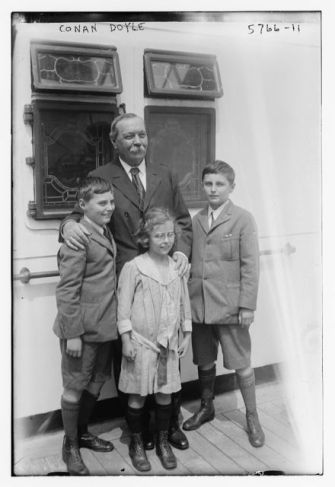This month is Hispanic Heritage Month where we celebrate, among other things, the history and contributions of the Hispanic community. Probably one of the most well-recognized names (and faces) of the Golden Age of Hollywood is that of Lucy’s husband, Desi Arnaz. Only, he was much more than just Lucy’s sidekick in the I Love Lucy show.
Now, I really do love Lucy. Not only did she open doors for women comediennes at a time when men were dominating the comedy genre in film and television, but her I Love Lucy character offered a different glimpse of who women were in the Occupation: Housewife era of the 1950s. It also gave us another image to look up to other than the happy and contented housewife that characters like June Cleaver (though I defend June in this blog post) that many women of the mid-20th century found so oppressive.
But the success of I Love Lucy wasn’t due to Lucille Ball alone. I was recently watching a documentary about Lucy and while it went into details about her life and career, the mention of Desi Arnaz seemed almost like an afterthought. That annoyed me and made me curious about the life and work of this Cuban-American icon. What I found was a man who displayed a technical brilliance and talent of his own, not to mention a resilience that many people immigrating to America (including me) could identify with.

Photo Credit: Desi Arnaz, publicity photo, 1950, General Artists Corporation: Wikimedia Commons/PD US no notice
Desi came from Cuban nobility, which did not sit well with the revolutionaries active in Cuba in the 1930s. In fact, his family had to flee to America when the revolutionaries destroyed their home and possessions in 1933. They came to Miami with nothing and, like many immigrants, had to struggle to survive. They lived in a garage and Desi mentions in several interviews that he had to clean out birdcages among other odd jobs to help the family income.
However, his musical talent led him to form his own orchestra and tour around the country which got him into films. This, of course, is where he met and married Lucille Ball in 1940.
As Lucy’s husband on the show, he was charming and tolerant of her crazy schemes. But Desi’s real talent lay behind the scenes. He was a very savvy businessman and as passionate as Lucy about developing the technical side of television (which, in the early 1950s, was still very new). Desi is always credited for coming up with what is now considered the gold standard of the TV sitcom world: the multiple-camera set up. Up until 1951, most sitcoms were produced in New York and were recorded and broadcast to the rest of the country in a less-than-attractive way in terms of quality. Desi and his cameraman developed a system of multiple cameras filming at the same time on a sound stage with a live audience in the background which allowed for higher-quality images and a realtime feel to the show. Another thing Lucy and Desi are credited for is the invention of the rerun. They insisted on retaining the rights to the I Love Lucy show which allowed them to negotiate contracts with TV stations to broadcast the reruns we still see today.
After Lucy and Desi divorced in 1960, Desi continued to be active in film and television, though not to the degree that Lucille Ball was (who went on to create two more shows in the 1960s and 1970s, as well as star in a multitude of films). He largely retired from the limelight.
Still, his contribution to television is one of the endearing legacies of the medium, not to mention his marriage to Lucille Ball. In the 1950s, multi-racial marriages were much less common than they are today (something that plays a role in my upcoming Adele Gossling Mysteries book Murder Among the Rubble).
If you want to know more about what women enduring in the 1950s, you might enjoy my post-World War II short story collection, Lessons From My Mother’s Life. You can read all about it and find out where to get it here.
If you love fun, engaging mysteries set in the past, you’ll enjoy The Missing Ruby Necklace! It’s available exclusively to newsletter subscribers here. By signing up, you’ll also get news about upcoming releases, fun facts about women’s history, classic true-crime tidbits, and more!





